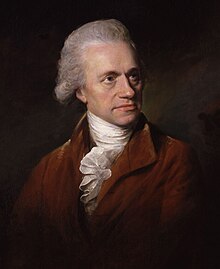Uran (astronomia)
 | |||||||
| Tipo | Pianeta | ||||||
| Descuerzidore | William Herschel[1] | ||||||
| Data descuerzimento | 13 de marso del 1781[1] | ||||||
| Epònemo | Urano (it) | ||||||
| Ojeto pare | Sołe | ||||||
| Ojeti fiołi | Cordelia (it) Ofelia (it) Bianca (it) Cressida (it) Desdemona (it) Giulietta (it) Porzia (it) Rosalinda (it) Cupido (it) Belinda (it) Perdita (it) Puck (it) Mab (it) Miranda (it) Ariel (it) Umbriel (it) Titania (it) Oberon (it) Francisco (it) Calibano (it) Stefano (it) Trinculo (it) Sicorace (it) Margherita (it) Prospero (it) Setebos (it) Ferdinando (it) Anello Epsilon (it) Anello Beta (it) Anello Nu (it) Anello Mu (it) Anello 5 (it) Anello 4 (it) Anello 6 (it) Anello Gamma (it) Anello Lambda (it) Anello Eta (it) Anello Zeta (it) Anello Alpha (it) Anello Delta (it) | ||||||
| Època | J2000.0 | ||||||
| Dati orbitałi | |||||||
| Apoàpside | 3 006 318 143 km | ||||||
| Periàpside | 2 734 998 229 km (arg (ω): 170,9542763) | ||||||
| semiase major a | 2 870 658 186 km e 19,18916464 AU | ||||||
| Esentrisità E | 0,04725744[3] | ||||||
| Perìodo orbitałe P | 84,0205 a e 30 688,5 d | ||||||
| Perìodo sinòdego | 369,66 d | ||||||
| Anomalia mezana M | 142,238 °[4] | ||||||
| Inclinasion i | 0,77263783 ° ↔ eclìtega[3] 6,48 ° ↔ ecuator del Sołe 1,02 ° ↔ pian invariàbiłe[3] | ||||||
| Lonzitùdene nodo asendente Ω | 74,01692503 ° | ||||||
| Caratarìsteghe fízeghe e astronòmeghe | |||||||
| Distansa da la Tera | 2 600 000 000 km (perizeo) 3 150 000 000 km (apozeo) | ||||||
| rajo | mèdia: 25 362 km[5] Equatore: 25 559 km[5] połare: 24 973 km[5] | ||||||
| Diàmetro | 51 118 km[6] | ||||||
| Piatamento | 0,0229 | ||||||
| Magnitùdene aparente (V) | 5,9–5,32[4] | ||||||
| Diàmetro angołare | 3,3 ″–4,1 ″[7] | ||||||
| Àrea de superfise | 8 115 600 000 km²[4] | ||||||
| Masa | 86 810 Yg | ||||||
| Vołume | 68 330 000 000 000 km³[4] | ||||||
| Densità mezana | 1,271×103 kg/m³ [8] | ||||||
| Gravità superfisałe ecuatoriałe | 8,7 m/s²[4] | ||||||
| Ascension reta (α) | 17h 9m 14.64s
[4] | ||||||
| Declinasion (δ) | -16° 49' 30''
[4] | ||||||
| Albedo | 0,65 | ||||||
| tenperatura de superfise |
| ||||||
| Parte de | sistema sołare esterior | ||||||
| Formà da | |||||||
Uran xe el setimo pianeta del sistema solare in ordine de distansa dal Sole, el terso par diametro e el cuarto par masa. El so sinbolo astronomico Unicode xe U+26E2 ⛢ (cualche volta ♅, stilixasion de la letera H inisiale de William Herschel). El ga el nome del dio greco del cielo Uran (Οὐρανός in greco antico), pare de Crono (Saturno), a so volta pare de Zeus (Giove).


Carataristeghe
[canbia | canbia el còdaxe]
La prinsipale particolarità de Uran xe l'inclinasion del so ase, che mixura 97,77° rispeto al pian de l'orbita; pertanto l'ase de rotazsion de Uran el giase cuasi so el so pian orbitale. De conseguensa, ognun de i do poli xe direto verso el Sole par metà de l'orbita, e par la sucesiva casca 'nte la xona in onbra.

I sateliti naturali de Uran conosui i xe ventisete. I cincue pì masici i xe Ariel, Umbriel, Titania, Oberon, Miranda.
Nòte
[canbia | canbia el còdaxe]- ↑ 1,0 1,1 (RU)
- ↑ Descrivesto inte l'URL: https://sites.uni.edu/morgans/astro/course/Notes/section4/new21.html.
- ↑ 3,0 3,1 3,2 Declarà da: Keplerian elements for approximate positions of the major planets. Łéngua de l'òpara: inglezo. Data de publicasion: 15 de febraro del 2015.
- ↑ 4,0 4,1 4,2 4,3 4,4 4,5 4,6 4,7 URL de refarensa: https://nssdc.gsfc.nasa.gov/planetary/factsheet/uranusfact.html.
- ↑ 5,0 5,1 5,2 (inglezo) 4 de disenbre del 2010, DOI:10.1007/S10569-010-9320-4. Sconosesta: inglezo (juto);
- ↑ URL de refarensa: https://nssdc.gsfc.nasa.gov/planetary/factsheet/uranusfact.html. Referio cofà: Equatorial radius (1 bar level) (km): 25,559.
- ↑ voze de refarensanssdc.gsfc.nasa.gov.
- ↑ Eror:
<ref>nisun testo par el marcadornasa - ↑ URL de refarensa: http://www.astronomycafe.net/FAQs/q2681x.html.
- ↑ URL de refarensa: https://web.archive.org/web/20131102112312/http://marsrover.nasa.gov/spotlight/20070612.html.
Bibliografia
[canbia | canbia el còdaxe]- Irene Andrieu, Astrologia evolutiva, Edizioni Mediterranee, 1991, ISBN 88-272-0534-9.
- Andrea Bernagozzi, Davide Cenadelli, Seconda stella a destra. Guida turistica al sistema solare, Sironi editore, 2009, p. 162, ISBN 978-88-518-0107-6.
- (EN) Geoff Brown, Chris Hawkesworth, R. C. L. Wilson, Understanding the Earth, CUP Archive, 1992, ISBN 0-521-42740-1.
- Luca Ciancio e Renato G. Mazzoni, Giuseppe Antonio Slop (1740-1808), in «Invaghiti della filosofia sperimentale»: scienziati trentini del settecento, Trento, Comune di Trento, 2004.
- (EN) Edward Derby, Peter Cannon, Lin Carter, Ramsey Campbell, Henry Kuttner, Stephen Rainey, Thomas Ligotti, Gary Myers, Richard Tierney, The Azathoth Cycle: Tales of the Blind Idiot God, Chaosium, 1995, ISBN 1-56882-040-2.
- (EN) Fran Howard, Uranus, ABDO, 2010, ISBN 1-60453-308-0.
- (EN) Ian Morrison, Uranus, in Introduction to Astronomy and Cosmology, John Wiley & Sons, 2013, ISBN 978-1-118-68152-7.
- (EN) Kim Stanley Robinson, Blue Mars, Random House Publishing Group, 1993, ISBN 0-553-89829-9.
- (EN) Richard W. Schmude, Uranus, Neptune, and Pluto and how to observe them, Springer, 2008, ISBN 978-0-387-76602-7, OCLC 429909679. URL consultato il 26 luglio 2018.
- (EN) Fred William Price, Uranus, in The Planet Observer's Handbook, 2a, Cambridge University Press, 2000, ISBN 978-0-521-78981-3. URL consultato il 14 gennaio 2009.
Voci correlate
[canbia | canbia el còdaxe]Linganbi foresti
[canbia | canbia el còdaxe]- UranoTreccani.it – Enciclopedie on line, Istituto de ła Ençiclopedia Italiana.
- Pio Luigi Emanuelli, URANO, in Ençiclopedia Italiana, Istituto de ła Ençiclopedia Italiana, 1937.
- (EN) Andrew P. Ingersoll, UranusEnçiclopedia Britannica, Encyclopædia Britannica, Inc.
| Controło de autorità | VIAF (EN) 316741874 · LCCN (EN) sh85141296 · GND (DE) 4062100-5 · BNF (FR) cb121153821 (data) · BNE (ES) XX456633 (data) · NDL (EN, JA) 00576471 · WorldCat Identities (EN) 316741874 |
|---|

